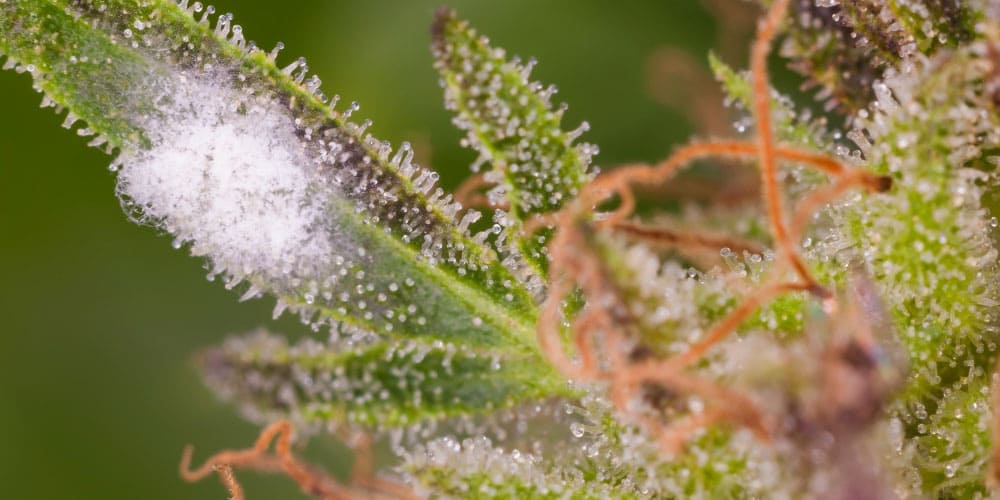As the practice of smoke moldy weed becomes a growing concern due to the increased legal recognition and widespread usage of cannabis in recent years, there has been a heightened focus on the quality and safety of the product. This issue, central to discussions among health experts and users alike, underlines that the risks involved go beyond just a poor taste or an unsatisfactory experience, it can lead to serious health complications.
- How to Spot Mold on Cannabis Products?
- Use Old Cannabis: Smoking, Vaping, or Cooking?
- Do You Need to Worry About Cannabis Expiration Dates?
Risks of Smoke Moldy Weed

Mold presence on cannabis is an indication of decay and contamination, similar to its effects on other organic materials. The most prevalent types of mold found on cannabis include Aspergillus, Penicillium, Mucor, and Fusarium. These molds are more than just surface-level issues, they deeply infiltrate the plant material, posing significant risks. The growth of these molds on cannabis is not merely a cosmetic problem but a serious concern, as they can produce harmful toxins known as mycotoxins, which can have severe health implications.
Mycotoxins produced by these molds are potent and can pose serious health risks if ingested or inhaled. They are not destroyed by typical cannabis consumption methods, including smoking or vaporizing. This means that using mold-infested weed can expose the user to these dangerous toxins. The risk is particularly high for individuals with compromised immune systems or respiratory issues, making it crucial to ensure the cannabis consumed is free from mold contamination to prevent potential health hazards.
Delight in the playful spirit of our Cherry Cannabis-Infused Gummies. Each of the 10 gummies bursts with vibrant cherry flavor, designed to elevate mood, stimulate appetite, and foster lively chats. Merging the sweet tanginess of cherries with the uplifting qualities of cannabis, they’re the perfect treat for social events or a mood-enhancing snack, promising a joyful and engaging experience.
Health Implications

When smoked, moldy weed exposes the user to these harmful fungi and their spores. The heat from smoking may kill some mold spores, but it doesn’t neutralize the toxins already present in the mold. Inhaling these toxins can lead to a range of health issues, particularly for individuals with compromised immune systems, asthma, or allergies.
- Respiratory Problems: Smoking moldy weed primarily leads to respiratory irritation, which is the most immediate and frequent consequence. Users may experience symptoms such as persistent coughing, wheezing, and noticeable shortness of breath. These respiratory issues can be particularly distressing and harmful, especially for those with pre-existing conditions.
- Allergic Reactions: Individuals with mold allergies are at a heightened risk when smoking moldy weed, as it can trigger a spectrum of allergic reactions. These reactions can vary from mild symptoms like sneezing and itching to more intense responses. In certain cases, particularly among those with severe mold allergies, the consequences can be more serious, potentially leading to anaphylactic reactions.
- Immune System Compromise: For individuals with compromised immune systems, such as those living with HIV/AIDS or undergoing chemotherapy, the inhalation of mold spores from cannabis can pose severe health risks. In these vulnerable groups, the body’s weakened defense mechanisms are less equipped to combat the harmful effects of mold, potentially leading to serious infections. These infections can be not only debilitating but in some cases, life-threatening.
- Neurological Effects: Some molds found on cannabis are known to produce mycotoxins, which can have neurotoxic effects on the human body. Exposure to these toxins, especially through inhalation, can result in various neurological symptoms such as persistent headaches, dizziness, and a general sense of disorientation. In extreme cases, prolonged exposure to these mycotoxins can lead to more severe and potentially long-term neurological damage.
- Cancer Risk: Certain molds on cannabis are capable of producing aflatoxins, which are recognized as some of the most potent carcinogens. The presence of these toxins raises serious health concerns, particularly in relation to cancer risk. Although the specific risks associated with smoking moldy weed and the inhalation of aflatoxins are not yet fully understood, the potential for increased cancer risk is a significant concern that cannot be overlooked.
Recharge with APE Blunt Kool Aid, a Sativa-dominant strain enveloped in smooth cigarette paper for a premium experience. Ideal for day use, it offers an energizing lift, perfect for tackling your day with vigor. Savor the exquisite blend of grape and sweet lavender aromas, with a flavor palette rich in fruity notes, bubblegum hints, and a subtle kush background.
Identifying Moldy Weed

To avoid the risks associated with moldy weed, it’s essential to know how to identify it. Mold on weed isn’t always easy to spot with the naked eye, especially in the early stages of growth.
- Visual Inspection: Look for fuzzy white, green, or black spots. Mold can sometimes be confused with trichomes, the crystalline structures on high-quality cannabis. However, mold has a web-like appearance and is not evenly distributed like trichomes.
- Smell Test: Moldy weed often has a musty, earthy smell, akin to hay or rotting wood. If the weed smells off or different from the usual herbal aroma, it’s best to err on the side of caution.
- Touch Test: Moldy weed can feel damp or sticky in a way that’s not due to resin content. If it clumps together when pinched, it might be moldy.
Prevention and Storage

Preventing mold growth is key to ensuring the safety and quality of cannabis. Proper storage is crucial in this regard.
- Control Humidity: Keeping cannabis in a controlled environment with a humidity level between 59% and 63% is ideal. This prevents the weed from becoming too dry, which can degrade its quality, or too moist, which encourages mold growth.
- Temperature Control: Store cannabis in a cool, dark place. High temperatures can promote mold growth and degrade the potency of the weed.
- Air Circulation: Good air circulation is essential. Stagnant air can create pockets of humidity and encourage mold growth.
- Use Airtight Containers: Glass jars with airtight seals are ideal for storing cannabis. Avoid plastic bags or containers, as they can encourage sweating and moisture buildup.
Introducing the Lemon Tree Sauce Cartridge, now in a sleek and convenient cartridge form. This hybrid strain delights with a perfect balance of sweet and sour, coupled with a high THC content for a harmoniously balanced high. Ideal for those seeking a potent, flavorful experience without the effort of rolling or grinding.














